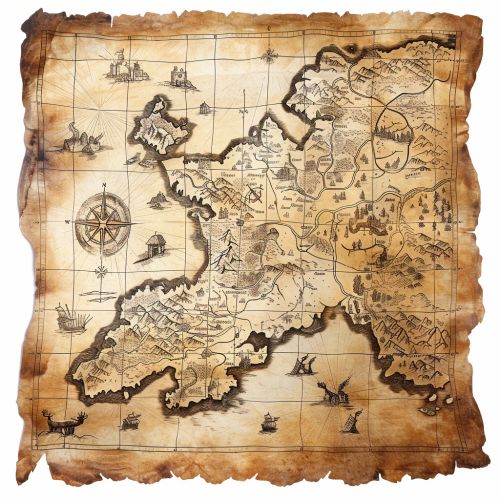Cartographer: Difference between revisions
(Created page with "== Definition and History == A '''cartographer''' is a specialist in the field of cartography, the science and art of making maps. The term originates from the Greek words 'chartis' (map) and 'graphos' (write). Cartographers have been instrumental in human history, helping societies navigate and understand the world around them. The history of cartography can be traced back to ancient civilizations. The earliest known maps were made by the Babylonians|...") |
No edit summary |
||
| Line 4: | Line 4: | ||
The history of cartography can be traced back to ancient civilizations. The earliest known maps were made by the [[Babylonians|Babylonian]] civilization around 2300 BC. These maps were simple and rudimentary, often inscribed on clay tablets. The [[Ancient Greeks|ancient Greeks]] made significant advancements in the field, with cartographers like [[Anaximander|Anaximander]] and [[Ptolemy|Ptolemy]] contributing to the development of geographical knowledge and map-making techniques. | The history of cartography can be traced back to ancient civilizations. The earliest known maps were made by the [[Babylonians|Babylonian]] civilization around 2300 BC. These maps were simple and rudimentary, often inscribed on clay tablets. The [[Ancient Greeks|ancient Greeks]] made significant advancements in the field, with cartographers like [[Anaximander|Anaximander]] and [[Ptolemy|Ptolemy]] contributing to the development of geographical knowledge and map-making techniques. | ||
[[Image:Detail-77869.jpg|thumb|center|An ancient map on a parchment.]] | |||
== Techniques and Tools == | == Techniques and Tools == | ||
Revision as of 04:19, 8 May 2024
Definition and History
A cartographer is a specialist in the field of cartography, the science and art of making maps. The term originates from the Greek words 'chartis' (map) and 'graphos' (write). Cartographers have been instrumental in human history, helping societies navigate and understand the world around them.
The history of cartography can be traced back to ancient civilizations. The earliest known maps were made by the Babylonian civilization around 2300 BC. These maps were simple and rudimentary, often inscribed on clay tablets. The ancient Greeks made significant advancements in the field, with cartographers like Anaximander and Ptolemy contributing to the development of geographical knowledge and map-making techniques.

Techniques and Tools
Cartographers use a variety of techniques and tools to create maps. These include surveying equipment, geographic information systems (GIS), remote sensing technology, and computer-aided design (CAD) software. The choice of technique and tool depends on the purpose of the map and the data available.
Surveying is a fundamental technique used by cartographers to measure and record the physical features of the Earth. This information is used to create accurate and detailed maps. Modern surveying techniques include GPS surveying, laser scanning, and photogrammetry.
Geographic Information Systems (GIS) are computer systems used to capture, store, manipulate, analyze, manage, and present spatial or geographic data. GIS technology has revolutionized the field of cartography, allowing cartographers to create dynamic, interactive maps.
Remote sensing is the process of detecting and monitoring the physical characteristics of an area by measuring its reflected and emitted radiation at a distance from the targeted area. Cartographers use remote sensing technology to gather data for map creation, especially for areas that are difficult to access.
Computer-aided design (CAD) software is used by cartographers to create digital maps. CAD software allows for precise design and provides tools for drafting, editing, and dimensioning map elements.
Types of Maps
Cartographers create various types of maps, each serving a specific purpose. These include topographic maps, thematic maps, navigational charts, and digital maps.
Topographic maps depict the physical features of an area, including its contours, elevations, and landmarks. These maps are commonly used in engineering, land use planning, and outdoor activities such as hiking.
Thematic maps focus on specific themes or topics, such as population density, climate, or economic activity. These maps are often used in research and policy-making.
Navigational charts are used by mariners and aviators to navigate their vessels or aircraft. These charts provide information on water depths, landforms, and navigational aids.
Digital maps are electronic maps created using GIS and CAD software. These maps can be interactive, allowing users to zoom in and out, change the map's orientation, and overlay different types of data.
The Role of a Cartographer
The primary role of a cartographer is to create accurate and useful maps. This involves several steps, including data collection, map design, and map production.
Data collection involves gathering geographic data from various sources. This can include field surveys, satellite imagery, and existing maps and databases. The cartographer must then analyze and interpret this data to create a map that accurately represents the geographic area.
Map design involves deciding on the map's scale, projection, and symbols. The cartographer must consider the map's purpose and audience when making these decisions. For example, a map designed for hikers would need to include topographic details and be easy to read, while a map for a scientific study might need to include specific data layers and use a particular map projection.
Map production involves creating the final map. This can be done using traditional drafting techniques or digital map-making software. The cartographer must ensure that the map is clear, accurate, and aesthetically pleasing.
Future of Cartography
The field of cartography is continually evolving, with advancements in technology and data collection methods leading to new possibilities for map creation. The rise of digital mapping and GIS technology has transformed the field, allowing for the creation of interactive, dynamic maps that can be easily updated and customized.
The future of cartography is likely to see further integration of technology, with developments in areas such as augmented reality, machine learning, and big data analytics offering exciting possibilities for map creation and use. Despite these advancements, the fundamental skills of a cartographer – spatial thinking, attention to detail, and understanding of geographic principles – will remain crucial.
